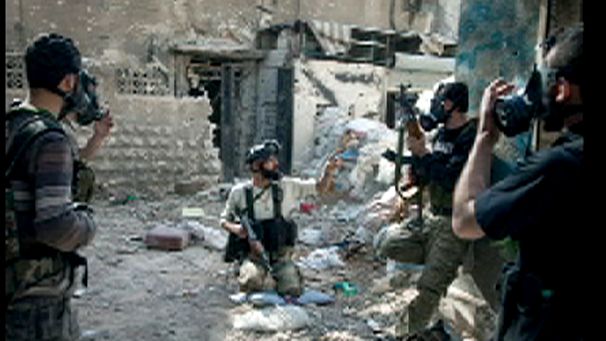
Syria's government and rebels accuse each other of using chemical weapons
Syria has agreed to allow UN investigators to visit three sites where chemical weapons have allegedly been used, the UN has said.
The inspectors will go "as soon as possible", a statement from Secretary General Ban Ki-moon's office said.
They are expected to investigate three locations of suspected use, including one in Khan al-Assal, outside Aleppo.
Some 27 people were killed in attacks allegedly involving chemical weapons in the northern town earlier this year.
Khan al-Assal was at the centre of allegations in March that chemical weapons were being used, with both sides of the conflict blaming the other for the attack.
It was under government control in March, but was captured by the rebels on 22 July.
While the UN did not identify the other two sites to be investigated, they are believed to be near Homs and Damascus.
It follows negotiations over access to the sites between the Syrian government, UN disarmament chief Angela Kane and head chemical weapons inspector Ake Sellstrom last week in Damascus.
UN Chief Ban Ki-moon had demanded widespread access in Syria to investigate all allegations of chemical weapons use since the 28-month conflict began.
However, the Syrian government has until now been insisting the UN probe be limited to Khan al-Assal.
The UN says it has received up to 13 reports of alleged chemical weapons use in Syria.
The UK and France sent letters to the UN secretary general in late March which reportedly detailed evidence based on witness interviews and soil samples that chemical weapons had been used on multiple occasions, including at Khan al-Assal.
In mid-June, the US said its intelligence agencies believed government forces had used chemical weapons, including the nerve agent sarin, "on a small scale against the opposition multiple times in the last year", resulting in an estimated 100-150 deaths.
Earlier this month, however, Russia said it had gathered evidence in a separate investigation to show that the Syrian rebels had used sarin in Khan al-Assal.
Moscow's permanent representative to the UN told reporters that a projectile most likely fired by the rebels into Khan al-Assal contained the nerve agent sarin.
The mandate of the UN investigation team is to establish if chemical weapons were used, not to determine who was actually responsible for the attack.
Both sides of the conflict have denied deploying chemical weapons.


